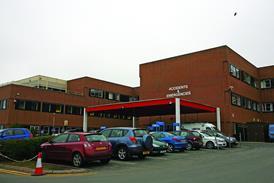HSJ looks at three case studies from the Listening into Action programme aimed at engaging the NHS workforce.
Listening into Action emerged from a call to arms by David Nicholson in 2008 around the need to engage and mobilise the 1.4 million people who make up its the healthcare workforce. Twelve trusts around the country were enlisted to help with the initial learning and testing of ideas, and this was then further developed through the involvement of 40 pilot trusts in the south west.
Four years on, through intensive work with nine acute hospitals and more than 300 teams – wards, pathways, departments, specialties, support services – a systematic approach for aligning strategic goals with a compelling and sustainable engagement effort has emerged. Based on the success to date NHS medical director Sir Bruce Keogh is now endorsing the spread of Listening into Action at a national level.
The approach is simple, structured and based entirely on what leaders and employees within the NHS say works for them. It is about ‘inverting the pyramid’; moving obstacles out of the way; connecting leaders with teams and teams with the strategic goals of the organisation in a way that makes sense to them; regaining the confidence and enthusiasm of clinicians; and working together towards a common purpose.
Here we look at the difference the approach is making.
Staff Survey Results up by 26 per cent
Sandwell and West Birmingham Hospitals Trust introduced Listening into Action in April 2008. From the outset, it was given top level sponsorship from the chief executive, medical director, chief nurse and other key influencers.
We also had hands-on involvement from Optimise - architects of the approach - who worked hand-in-hand with leaders and teams during the first 12 months to help us mainstream this as a new way of working.
The outcome three years on? LiA has transformed our trust into an organisation where front line staff are fully involved in improvements of all kinds, for patients and for themselves. It has unlocked a previously untapped resource, leveraging the talent, ideas and will of our staff for the benefit of our patients.
Looking back, there have been four major success factors for us.
First, we got a lot of momentum early on. There was a real sense that there was “something in the air” – something that felt different and good. The initial response from clinicians and staff was very encouraging.
Within just over a year, 3000 staff were directly involved, we had an unprecedented view of “what matters” and “what gets in the way”, and around 50 service areas were working “the LiA way”. This included stroke care, pharmacy, theatres, several wards, midwifery, and physiotherapy. It was hard work, but the groundswell by the end of the first year was worth it.
The second success factor was the combination of: consistent commitment from the chief executive and leadership team who formed an LiA sponsor group which met every fortnight to “navigate the journey”; a compelling and simple “methodology” to follow which was more about inspiration, ideas and outcomes than paper, projects and politics; hands-on, day-to-day leadership from one of the architects of the approach to help us get things moving at the pace we needed and transfer skills to our own team.
Thirdly, at the end of the first year we appointed our own, in-house LiA facilitator to ensure sustainability. This is a special, ongoing role, reporting directly to the chief executive, and working across the trust to spread this new way of working, coach and support teams, monitor progress and outcomes, and shout about success stories.
Finally – which got us to the “tipping point” in terms of sustainability – we transferred ownership for using and spreading LiA to our operational divisions, who report back to the sponsor group on a monthly basis.
Through this accountability and because clinical and operational leaders at all levels have taken ownership of the approach, we have broadly succeeded in embedding a more engaged style of leadership across the trust. Our best leaders already operated like this. Of those who did not, a significant section have shifted their behaviour, and we continue to work with the remaining minority to get them there.
LiA is now well embedded across the trust. It is used as a vehicle for change management, service improvement, encouraging better cross-site integration and as a way of dealing with specific challenges and opportunities to raise the bar. It has become “the way we do things around here”, and, critically, it has proven to be a sustainable model for staff engagement and empowerment.
But a word of caution – it is not a universal panacea and some difficult situations (particularly around leadership) require a different approach.
In terms of outcomes, staff have been allowed to use their creativity and enthusiasm as part of the LiA process and have achieved some stunning improvements including, for example, a significant reduction in waiting times for orthotics from months to weeks, provision of a 24/7 imaging service, a faster response for stroke patients, and changes in working practices and shift patterns which benefit patients and their teams.
They have also been able to tackle the small irritations of daily working life which previously got in the way of them doing their jobs effectively.
LiA has also been used extensively to engage with patients and acts as a powerful and compelling catalyst for change, especially amongst clinicians. Within critical care, this has led to changes in practice, including the introduction of “patient diaries” where relatives and staff record what is happening so that patients can account for that “lost time” in their life.
The design of our recently opened Serenity Birthing Centre was also informed by the views of patients using LiA, as were changes in ophthalmology, audiology and many other areas.
There are many examples of changes that have resulted in improvements for patients, but the main benefit for staff is really about enablement and empowerment. Staff can and do change things in their teams, and those changes are widely communicated via an ongoing campaign to give them credit and profile for their work. This in turn “fuels” wider spread.
Overall, the trust has seen a significant improvement in our National Staff Survey results. A recent comparison of a range of key indicators from 2011 compared to those from 2007 before we started with LiA demonstrates a pattern that is striking:
- There have been positive movements on all relevant indicators
- Some are very large, with a shift of up to 26 per cent
- We started below the national average on all indicators but are now above on all
- This trend is unprecedented and creates a positive platform from which to achieve even better results in the future.
The main impact is around staff feeling valued, being involved in decisions, being encouraged to share ideas, and feeling happier with communication between management and staff. But most importantly, the proportion of staff who feel that patient care is our trust’s top priority has increased by 22 per cent (to 10 per cent above the national average).
While there may, of course, be other influences at play, we are convinced that these improvements are mostly due to the way LiA has been embedded across the trust, including the impact on our culture and style of leadership.
Building on this strong foundation, we are exploring and piloting a “mutual” model along the lines of John Lewis. We are experimenting with elected staff ambassadors, who work with team leaders to make further improvements.
In difficult times, it is easy to find reasons not to focus on staff engagement and empowerment as it feels like an ‘optional extra’. But the truth is that staff who are fully engaged and empowered deliver better care to patients and are more likely to go the extra mile. The sense of pride and ownership that ensues is priceless.
It’s not easy, but it’s worth the effort. The investment required in terms of cost, time and effort is modest in comparison to the gains. Engaged staff deliver better services to patients and are key to driving the efficiency improvements which are vital to future success.
John Adler, chief executive, Sandwell and West Birmingham Hospitals Trust
Results that speak for themselves
Like any NHS hospital, we are not short of challenges – clinical, operational, financial or otherwise. But, while attention at the top of the organisation may be diverted to some extent by these challenges, frontline teams continue to provide services to patients, and the need to engage and empower them to improve these services has never been more important.
We started our own adoption of Listening into Action (LiA) over a year ago. It was an intuitive decision based on the premise that engaged staff deliver better care. While we were already doing what we could, the idea of a concerted effort and a structured approach appealed – especially one that had been endorsed nationally and already used successfully in other trusts.
One of the most startling outcomes for us was the impact that feeling engaged had on our staff. This was made evident at the end of our first year, when we compared staff ‘pulse check’ results between teams that had been using LiA and those who had not (see attachment).
These results say it all and warrant some serious thought. If we can leverage what we have learnt, if we can get all our leaders working this way, if we can help all of our staff to feel this good, then it follows that we will do better for our patients.
We have already seen lots of tangible improvements come from this. For example, our therapies team were one of the first to get involved, led by Michelle Young our head of therapies.
Within six weeks they had reduced the waiting time for non-urgent patients from 10 weeks to zero. This took no more money or resources, in fact they reduced the number of people working on the booking of appointments. They simply used the LiA process to create a ‘call to arms’, got all the right people involved in a way that made them feel valued and listened to, generated ideas together, and took ownership of making it happen.
As well as the impact on waiting times for patients, they reorganised the environment, created a much more welcoming area for patients, and boosted the morale of the team who feel happier and more able to drive forward changes they want to see – for the benefit of their patients and themselves. Once any team has been through 2-3 rounds of this, it starts to embed and become the way we approach all of our challenges.
Our head of medical records, Lisa Vaughan, also jumped at the opportunity to get her team involved. They joined up with several pilot departments and quickly found ways to radically improve the flow of patient records, reducing the need to chase ‘lost’ files by 15 per cent within just a few weeks.
I could refer to many other examples across many other teams including numerous wards, fracture clinic, maternity, stroke care, emergency pressures, dementia care, phlebotomy, portering, theatres, community midwifery, library services, paediatrics, sterile services, reproductive medicine, information, A&E, EAU, estates, diabetes, general surgery, GUM, maxillo facial, orthodontics, and many more.
Aside from frontline and support services, we have used LiA to engage a rich mix of people around strategically important challenges such as the integration of services and new facilities, the financial challenge, quality accounts, and a very successful Pride in our Hospital campaign.
We are also one of the trusts pioneering use of the new LiA Optimal Framework – in our case for wards and outpatients - which brings together a repository of ideas for what ‘great’ looks like with the methodology for engaging all the right people around making that happen.
The main things we have learnt? This is not an initiative and has to be an ongoing, top priority for our leadership team and our Trust. It is all too easy to get distracted – but when we look back in 5 or 10 years’ time, many other things may have come and gone, but engaging our staff will still be right up there.
Helen Ashley, chief executive, Burton Hospitals Foundation Trust
The oncology story
We have a great team in oncology and are passionate about doing our best for our patients. Even so, we are all so busy with our day jobs that it is difficult to find time to step back and take a look together at the things we could do better.
Last August, we signed up to be a ‘trailblazer’ specialty for LiA Optimal Outpatients. The idea was that a ‘triumvirate’ of doctor, nurse and operational sponsors would lead work to engage each team around the ‘big impact’ actions that would make the biggest difference for our patients and ourselves.
Within the first 3 months, we achieved a lot. First and foremost, we broke down barriers and brought together consultants, nursing teams, related professionals and support teams in a way we had never managed before. Secondly, we agreed the first round of changes we wanted to make, got a critical mass of people on board, and actually made those changes happen.
The initial changes we made were around improving the booking rules for our clinics so patient flow was better, better information for patients to reduce frustrations and waits, introduction of a front desk daily ‘coordinator’ role to oversee smooth running of clinics, better support between consultants to enable faster decision-making, more efficient use of space, and a clear plan to reconfigure the scheduling of chemotherapy treatment which will reduce treatment delays and avoid cancellation of chemotherapy administration on the day.
I think the fact that we made those things happen within 12 weeks with no additional money or resources is unusual and shows what is possible when you get everyone fired up and moving in the same direction.
The value of the LiA approach is in its simplicity. It prompted us to get focused on outcomes, made it compelling for the right people to come together – willingly and with enthusiasm – to share ideas and ownership, gave us a forum for sharing ideas, and created positive pressure to get on and do it.
We are already into the second round and, as new challenges and opportunities arise, we will use the same process to decide actions and make them happen. It is easy to see how this will become part of the way we do things.
Everyone knows that the front-line clinical teams must be engaged in developing services. They usually know where the problems are and what to do about them. Our team has found it exciting, interesting and productive.
Jim Hollingworth, consultant, Burton Hospitals Foundation Trust























No comments yet